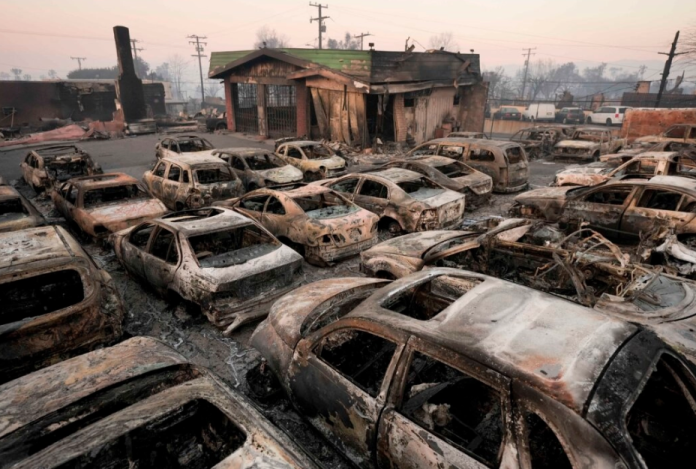Los Angeles and surrounding wildfire-hit regions are shielded by a new one-year moratorium on insurance non-renewals, according to California’s insurance commissioner, Ricardo Lara, who announced the year-long freeze on Jan. 9.
“I am using my moratorium powers to prevent insurance companies from canceling or non-renewing policies in wildfire-impacted areas, so people don’t face the added stress of finding new insurance during this horrific event,” Lara said in a
statement.
The one-year moratorium on policy non-renewals and cancellations protects residents in and near the ZIP codes affected by the Palisades and Eaton fires in Los Angeles County, regardless of whether the properties sustained damage, according to Lara.
The ZIP codes covered by the moratorium are listed in the
Commissioner’s Bulletin, a document that formalizes the freeze. The California Department of Insurance may release a supplemental bulletin if new ZIP codes are identified as being within or near the fire perimeter related to the declared state of emergency for Los Angeles and Ventura counties, according to Lara.
The authority to issue such moratoriums was granted to the insurance commissioner by
Senate Bill 824, introduced by Lara during his tenure as a state senator and signed into law in 2018. The law prohibits insurers from canceling or refusing to renew residential property policies in wildfire-affected areas when a state of emergency is declared. It also provides policyholders who lose their homes to fire with protection for up to 24 months.
The freeze is effective starting from Jan. 7, the day that Gov. Gavin Newsom
declared an emergency to support the communities impacted by the fires. Newsom’s declaration noted that much of Southern California faced life-threatening winds and extreme fire risk.
Besides the moratorium, Lara
announced a two-day workshop on Jan. 18–19 for residents affected by the fires to help them understand their insurance policies and provide them with additional resources.
At least 10 people have been killed in the wildfires to date, Los Angeles County officials
have confirmed. Around 180,000 people remain under mandatory evacuation orders as firefighters work to contain the infernos.
Nearly 36,000 acres had been burned and over 10,000 structures had been destroyed by the fires in the Los Angeles area,
according to Cal Fire on Friday morning. Forecasters say the high-fire weather risk will continue into Friday.
The potential economic loss and damage from the fires is estimated to be between $135 billion and $150 billion, according to AccuWeather data released on Jan. 9. Previously, the company estimated damages to be between $52 billion and $57 billion. The preliminary damage estimate accounts for both insured and uninsured losses, including property damage, wage impacts, infrastructure destruction, supply chain disruptions, and other related effects.
“These fast-moving, wind-driven infernos have created one of the costliest wildfire disasters in modern U.S. history,” AccuWeather Chief Meteorologist Jonathan Porter said in a statement. “Hurricane-force winds sent flames ripping through neighborhoods filled with multi-million-dollar homes. The devastation left behind is heartbreaking and the economic toll is staggering.”
The insurance industry is bracing for significant losses. Early projections from Morningstar DBRS estimate the catastrophe could result in $8 billion in insured losses.
“Property insurance affordability is likely to remain a challenge in the state going forward, with many property owners opting to remain uninsured or under-insured because of the high costs,” Patrick Douville, vice president of global insurance and pension ratings at Morningstar DBRS, said in a Jan. 9
note.
Bloomberg Intelligence analysts
project that insured losses could reach $10 billion, citing the high value of homes at risk.





















